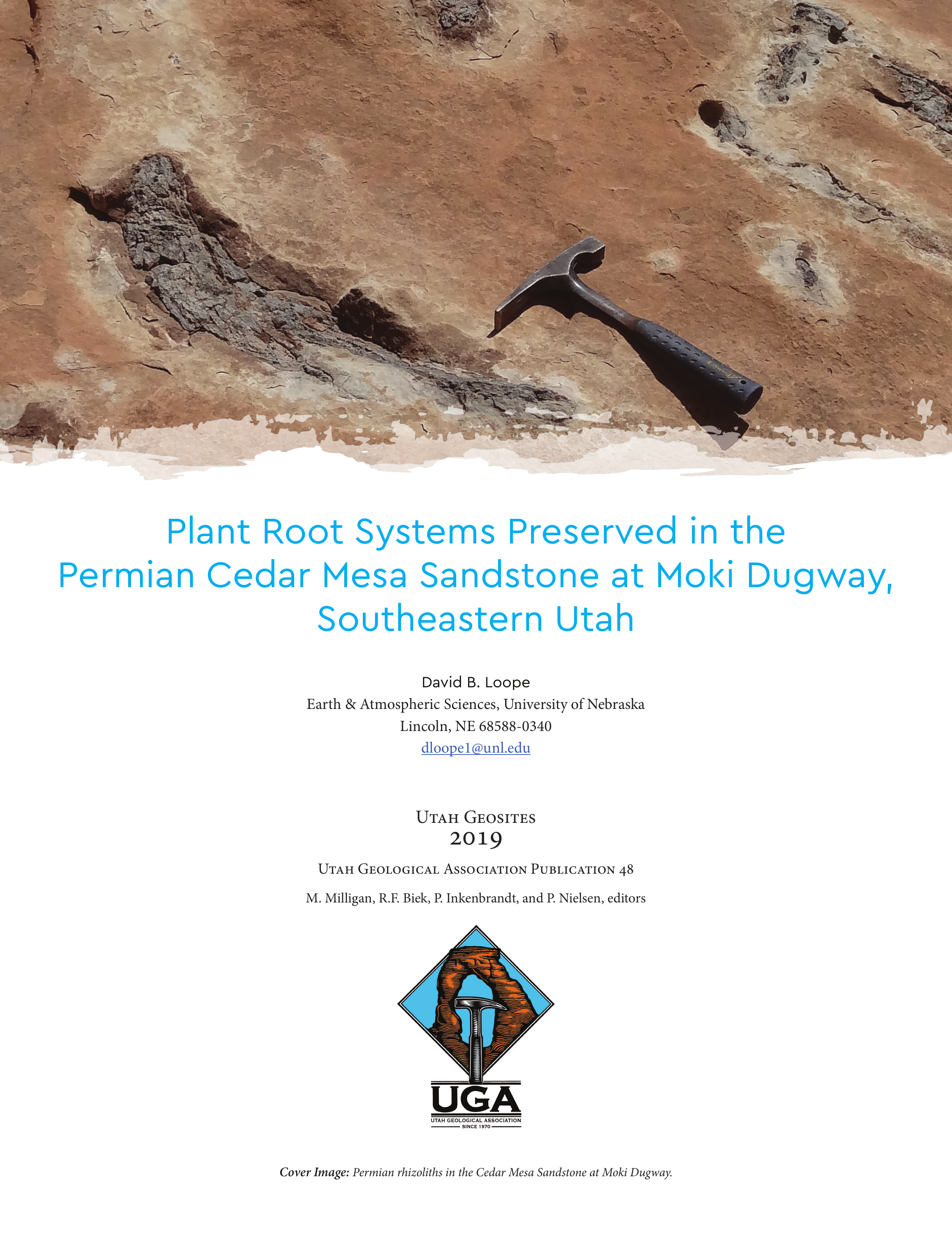Plant Root Systems Preserved in the Permian Cedar Mesa Sandstone at Moki Dugway, Southeastern Utah
Abstract
Rooted green plants represent the base of the food chain for most terrestrial ecosystems, but, compared to animal burrows, root systems are relatively rarely recognized in ancient sedimentary rocks. Plant roots that penetrate unconsolidated sand dunes, especially those containing not only quartz grains, but also abundant grains of calcite (CaCO) are commonly replaced by fine crystals of calcite (Klappa, 1980). These structures (known by geologists as rhizoliths from the Greek for “root rock”) are one form of calcite cemented soil and sediment called caliche. Caliche crystallizes well above the water table and its calcite crystals are tiny because of rapid evaporation of soil water. One source of the calcium (Ca) and carbonate (CO) ions necessary for making the calcite of caliche is falling dust, and another source is the dissolution of calcite grains already in the soil.

Copyright (c) 2019 Utah Geological Association

This work is licensed under a Creative Commons Attribution 4.0 International License.

